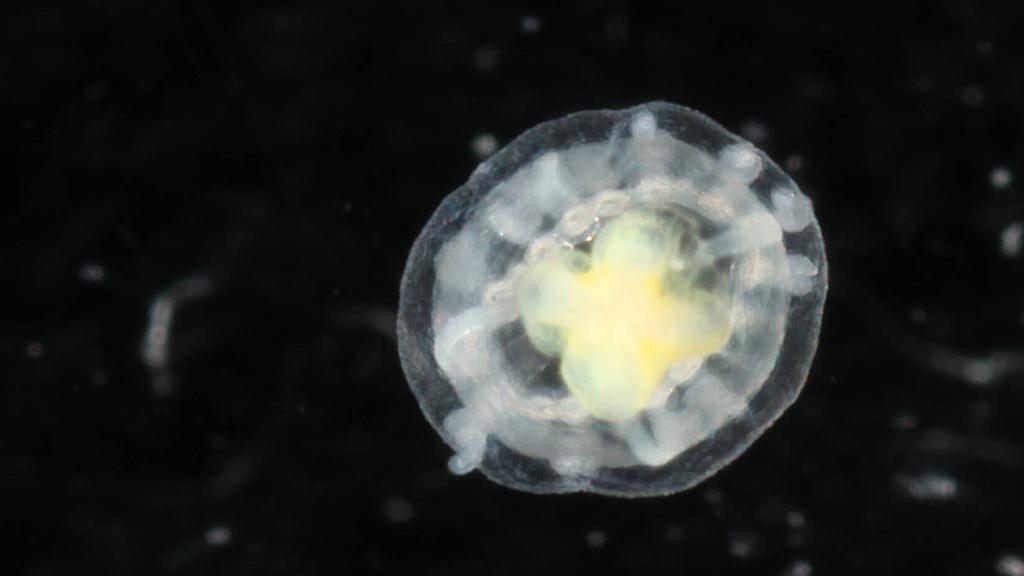Nature has everything, and that everything includes huge differences in the life expectancy of its creatures..
while the ephemeroptera, that flying insect known as mayfly, lives just 24 hours, the Turritopsis dohrnii it also lives up to its name: the immortal jellyfish.
Tiny and transparent, they have extraordinary survival skills: they revert to their youthful forms in times of stress, such as when they are physically harmed or even starved, and can theoretically live forever.
They seem to have found that mythical fountain of youth that humans, aware that, as the philosopher Montaigne said, “death has us by the scruff at all times” and finally strangles us, we have not stopped looking.
In fact, the oldest story we know of, “The Epic of Gilgamesh,” is about that longing.
Engraved on clay tablets four millennia ago in Mesopotamia, it tells of the journey undertaken by King Gilgamesh in search of a way to overcome death.
What he finds is the meaning of life:
“Humans are born, live, then die,
This is the order that the gods have decreed.
But until the end comes, enjoy your life,
spend it on happiness, not despair“.
His advice, however, went unheeded, and to this day there are scientists in the best research centers on the planet whose mission resembles that of King Gilgamesh.
Despite all efforts, at the moment, our global average life expectancy is 73.4 years (2019, World Health Organization).
And although it has increased, there is a law on life and death that has been in force since it was postulated almost two centuries ago.
The odds of the inevitable

Curiously, this law regarding the life expectancy of humans did not come from a science that sought immortality, or at least prolong life, but from another field of knowledge that is also interested in the subject of longevity: actuarial science.
It is the discipline that applies statistical and mathematical models for risk assessment mainly in the insurance and financial industries.
More specifically, the goal of the law was to make the science of calculating the appropriate rates for selling and buying annuities more reliable.
And who marked a new era for that science was the mathematician Benjamin Grompertz in the 19th century, who was an insurance actuary.
In 1825 he presented a paper entitled “On the nature of the expressive function of the law of human mortality, and on a new mode of determining the value of the contingencies of life”, before the Royal Society in London.
It was a mathematical model that stated that the risk of death increases exponentially as we ageand is now known as “Gompertz’s Law of Human Mortality.”
At first glance, it seems obvious, and indeed, it is partly so.
Over the years, our cells slowly stop dividing, placing a greater burden on those that remain, which deteriorate until our bodies can no longer continue.
But the key is in the word “exponentially”.
Grompertz had analyzed reports on death rates and I had detected a pattern.
A mystery

The law is basically a calculation of the probability that we will die in a given year.
That is, if you were asked the unusual question of what do you think are the chances that you will die in the next year, what would you answer?
1 in 1,000? 1 in 1 million?
Whatever your calculation, that probability will double every 8 years.
If you’re 25, your chance of dying in the next year is minuscule: 0.03%, roughly 1 in 3,000.
At 33 it’s roughly 1 in 1,500, at 42, 1 in 750, and so on.
By the time you reach 100 years old, the probability of living to 101 will have dropped to 50%.
Since Gompertz proposed his law, data from mortality statistics have confirmed it, fitting almost perfectly in a large number of countries, time periods and even in different species of animals.
While the actual average life expectancy changes, the same general rule of thumb that “the chance of dying doubles every X years” still holds true.
That, in addition to amazing, it’s mysterious: It is not known with certainty why this is so.
But there are two “buts”.
something else and something weird
The first “but” is that, as you may have noticed, the model we are talking about is called the Gompertz-Makeham law, so we are missing something.
And that something was added in 1860 by William Makeham, another British actuary, when he proposed that the Gompertz model could be improved by adding a constant independent of age to exponential growth.
The Gompertz model works very well in sheltered settings where external causes of death are rare, such as laboratory conditions or countries with low mortality.
However, as we know, no matter how young or old you are, life can be fatally interrupted for other reasonssuch as accidents, malnutrition, diseases and so on.
Gompertz had already pointed it out: “It is possible that death is the consequence of two generally coexisting causes; one, chance, with no prior provision for death or deterioration; the other, a deterioration or further inability to resist destruction”.
But it was Makeham who added that component to the mathematical formula, a more variable factor in the model that can be mitigated by reducing socioeconomic and geopolitical risks.
Advances in science, medicine and sanitation, for example, have meant lower death rates in all countries.
Thus, this law designed to sell insurance policies became a valuable tool for demographers and sociologists as well as for biologists and biogerentologists.
The other “but” is intriguing, and still under investigation..
The Gompertz-Makeham law of mortality describes the age dynamics of human mortality very accurately in the age window of approximately 30 to 80 years.
But some studies have found that at older ages mortality rates rise more slowlya phenomenon known to scientists as the “old-age mortality slowdown theory.”
Gompertz himself seems to have foreseen this plateau of mortality in later life, since he observed that the human life tables showed that from the age of 92 the annual mortality rate was almost constant at 0.25.
Why does the law cease to apply after the age of 80? What changes when you reach that age?
Experts still don’t have the answer to those questions.
Could it be that like jellyfish, something in us returns to youth, at least for a while?
Keep reading:
* Why do some patients improve just before they die?
* The touching phenomenon that occurs in people who are about to die
* Can the tarot predict death?

Remember that you can receive notifications from BBC Mundo. Download the new version of our app and activate them so you don’t miss out on our best content.




